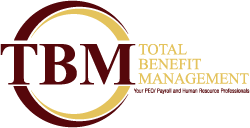- Total Benefit Management

How to Discuss Pay With Your Employees
September 27, 2017
Most Employees Hate Their Career Path. Here’s How to Help.
October 8, 2017With today’s changing workforce demographic, companies that want to succeed would do well to offer this employee benefit.
The “typical” American family is evolving. Single-parent households are on the rise, women are increasingly serving as the family breadwinner and employees are being tasked with caring for both children and aging parents.
Meanwhile, the generational makeup of the workplace is also changing. Forty-seven percent of employees are considered part of the sandwich generation, the segment of adults ages 40 to 59 with a minor child and a parent over age 65. Millennials now make up the largest demographic in the workforce and are starting families of their own.
Unfortunately, for those in the workforce, many employee benefits plans haven’t kept pace with these changing family dynamics. Employees with family caregiving needs often lack the financial safety net or ability to take time away from work.
Employees who need to take time away from work to provide care for loved ones often do so by piecing together paid time off, sick leave and short-term disability benefits. Without any federal program to support these workers, employers, individual states and some municipalities are starting to take matters into their own hands. A recent survey conducted by the Disability Management Employer Coalition (DMEC) and The Standard found that 32 percent of employers currently offer a paid family leave program.
Companies recognized as early adopters in paid family leave and paid parental leave know that work-life balance is a key factor in employee recruitment and retention efforts. If you are considering whether a paid family leave program is right for your company, here are four questions to consider.
How would a paid family leave program benefit our organization?
Although it may seem counterintuitive to create a program for employees to take time away from work, paid family leave programs often boost employee productivity. Paid family leave policies demonstrate an organization’s commitment to its employees and can help increase employees’ overall engagement, morale and productivity. This can help a company stay competitive in today’s tight talent market.
What are the differences between a paid family leave and paid parental leave program?
These programs may sound similar, but there are unique differences between the two types. Paid family leave programs generally provide leave for:
- Bonding time with a newborn or newly adopted child
- Caring for a family member (typically a parent, spouse or child) with a serious health condition
- Relieving family pressures when a family member is called to active military service
- An employee’s own serious illness
A paid parental leave program only provides time for both men and women to bond with a newborn or newly adopted child. Of employers surveyed by DMEC and The Standard, 32 percent said they offer a paid family leave program, while 34 percent said they provide paid parental leave benefits.
Is my state implementing legislation?
While federal legislation has been proposed in the Senate, only five states (New Jersey, California, Rhode Island, New York and Washington) and the District of Columbia have passed or implemented statewide paid family leave benefits to date. Sixteen other states across the country have proposed legislation within the last year.
If you’re in one of the states that currently doesn’t have any paid family leave legislation passed, it’s important to stay informed on the status of your state’s legislation, as it may impact or change the design of your program.
What if my organization has locations in multiple states?
Multistate employers can be impacted by legislation even if you aren’t located in a state with a mandatory paid family leave program. That’s because you may be required to offer coverage to employees who reside in a state that does have a leave law.
For example, New York’s paid family leave program will be effective Jan. 1, 2018. The program requires private employers with New York-based employees that provide disability benefits coverage to also provide paid family leave coverage. This mandate also applies to employers that are not based in New York but have remote employees based in the state who are eligible for disability benefits.
If that weren’t enough, the state-based programs that have been passed differ from state to state. It is important for employers to be aware of state and local regulations and consider how the programs, funding amounts and employee deductions differ between states.
A 21st-century program
The battle among organizations for top talent is heating up, and many employers are considering paid family leave programs as a way to stay relevant and competitive. Evaluating if a proactive paid family leave program is right for your organization is one way to make sure your organization stands out from the rest.
This article was originally published on Entrepreneur.

